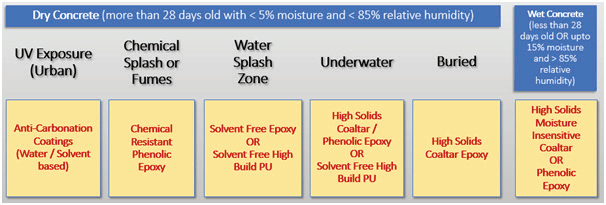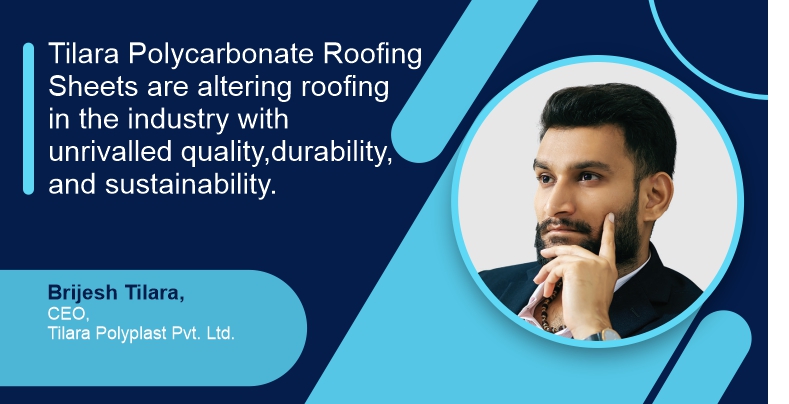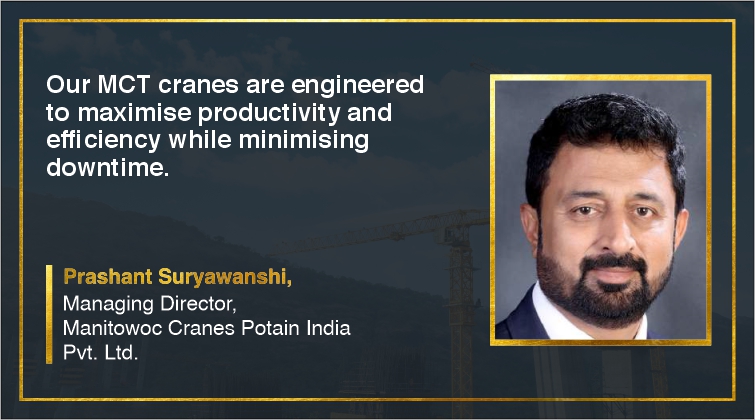Coating solutions may be considered from the inception stage
By Edit Team | July 9, 2021 12:08 pm SHARE

A simple coating system can provide the same protection as equal to several millimetres of cover concrete, says Anupam Shil, Head – Technical & Marketing Services, STP Limited.
What are the major factors involved in corrosion related to construction projects?
Corrosion is a natural process of reconversion, in which a material produced through energy inputs for a desired purpose gradually attempts to return back to its raw ore form, from which it has been retrieved; just like a spring trying to regain back its original state of equilibrium. During construction of a structure, several elements contribute to factors that becomes the cause of corrosion and its propagation during its useful life span. Some of these can get contributed from as simple as the quality of water used, source of fine aggregates, craftsmanship of thermo-mechanically treated bars used for reinforcement, presence of deleterious salts in building materials, selection of mix design based on aggressiveness of the environment, etc. The Indian Standard IS-486 categorically specifies type of environments that PCC or RCC element may be subjected to and suggests needful mix design considerations for best results in terms of durability.
Which are the types of coating solutions being used in corrosion protection?
Coating solutions may be considered from the inception stage. Fusion bonded epoxy coated TMT bars are being used for better corrosion protection. However, since the coating process is cumbersome and asks for a factory environment, carrying it out at site is not possible. Thus, the bends and rebar stirrups need to be created first and subsequently coated before dispatch. This simply asks for much ahead of time planning and systematic execution. In the Indian context, this is the most popular and adaptable technology. Additionally, choice of MOC is also practised for aggressive environments, particularly towards the coast. Keeping adequate cover thickness is also considered as a dependable method and is being practised by structural engineers.
At a design stage, many ways of mitigating corrosive conditions to develop around the rebars have been conceptualised. Use of special grade of cement, like, a Type V Sulphate resistant cement or Type IV Low heat of hydration cement is adopted wherever needed. Supplementary cementitious materials, like, fly ash, silica fume, rich husk, GGBS, etc. are incorporated as a part of mix design. High pozzolan content ensures low heat of hydration, thus, less thermal shrinkage cracks, a denser concrete formation as a result of smaller particle size of the pozzolans. Wherever early strength is not mandatory, use of PPC or PPC plus OPC mix in well-defined proportion is being practised. This not only results in a denser concrete but can be executed with lower input costs and lesser environmental impact. A denser concrete ensures slower ingress of corrosion causing salts through the concrete pores.
Along with this, application of protective coating post construction is the most practical way of not allowing corrosion causing salts to ingress into the concrete. There are several structures which if protected with coatings, can get protected from early corrosive attack. A simple coating system can provide the same protection as equal to several millimetres of cover concrete. And it is most prudent for any asset owner to adopt it while the structure is still operating within its corrosion initiation phase.
How are the features and technologies evolving in surface/corrosion coating solutions?
One of the natural processes of deterioration, sometimes also called as the corrosion of concrete, is the process of carbonation. Our atmosphere contains a concentration of 0.04 percent of carbon dioxide in free air. In addition, a large part of carbon emission that releases from various industrial and automotive sources further adds to its concentration. In presence of moisture this turns into a mild acid, namely carbonic acid, and attacks the calcium hydroxide bonds in the concrete structure. Apart from reconverting it back to its ore form i.e., calcium carbonate, it results in reduction of pH level in the cover concrete, thus, compromising the protective oxide layer over the rebars and finally resulting in corrosion of concrete. A simple way to protect this is by carrying out protective coating that prevents ingress of corrosive salts, like, chlorides, sulphates, nitrates, etc. However, at the very minimal level, simple restricting absorption of water into the concrete substrate can prevent ingress of moisture into the concrete and thus, its ageing. Several technologies may be considered to extend durability to the constructed body. In view of the condition in which it prevails, a suitable technology can be selected as depicted by the table below:

What are the latest products and solutions offered in surface coating and corrosion protection?
Now, with the Indian government poised to make a whole lot of infrastructural investments, it is pertinent that protective coating is considered not only as a part of project capex but also in preventive maintenance budgets.
The new generation coatings are designed to act in challenging application conditions. In already operating structures, where isolation or accessibility is a question, coating technologies are being designed which can be applied over substrates,
- With minimal surface preparation
- Having equal bonding strength while used without a primer (self-priming coatings)
- That represent non-standard surface conditions – hot, moist or wet
- Are capable of providing a high build per coat, reducing number of coats
Having said so, there are certain unnoticed pockets that construction industry must focus upon. Some traditional coatings, like, coal tar, gives significant protection against soil bacteria and root infiltration. These coating have now evolved from mastic form to its epoxy hybrids and can be extremely useful. Subgrade and underwater structures are seldom given the required protection, as most of the attention is captured by aesthetics of above ground surface area. And if at all it is considered, a thin coat of hot applied or emulsified bitumen is adopted as a bare minimum formality.
What are the environment-friendly features and technologies evolving?
Researchers and government regulations are intending to produce and encourage materials that leave behind minimal damage to the environment. Coatings augment to the performance of metals and concrete by adding life to them, thus, directly contributing to sustainability. Yet, from environment, health and safety perspective it is important that coating materials are independently evaluated. Several low VOC and water-based technologies have been developed and being used by the industry. Coatings that can reflect solar heat helping in reducing energy input inside habitable spaces and reducing over heat island effect in urban locations are being adopted. Many government bodies have released circulars indicating preference towards induction of such coating systems, not only for building structures but also for human transport systems.
Cookie Consent
We use cookies to personalize your experience. By continuing to visit this website you agree to our Terms & Conditions, Privacy Policy and Cookie Policy.




































-20240213125207.png)

























